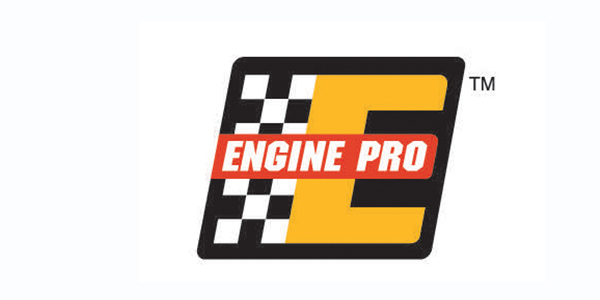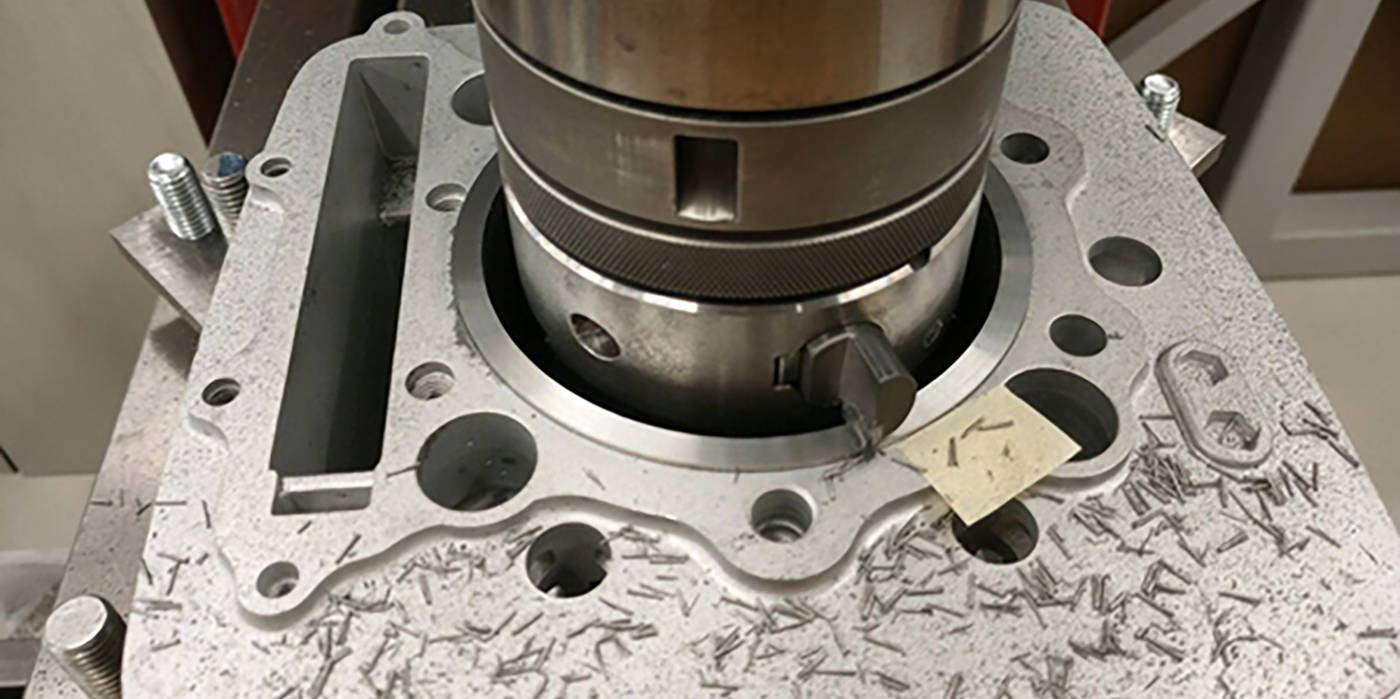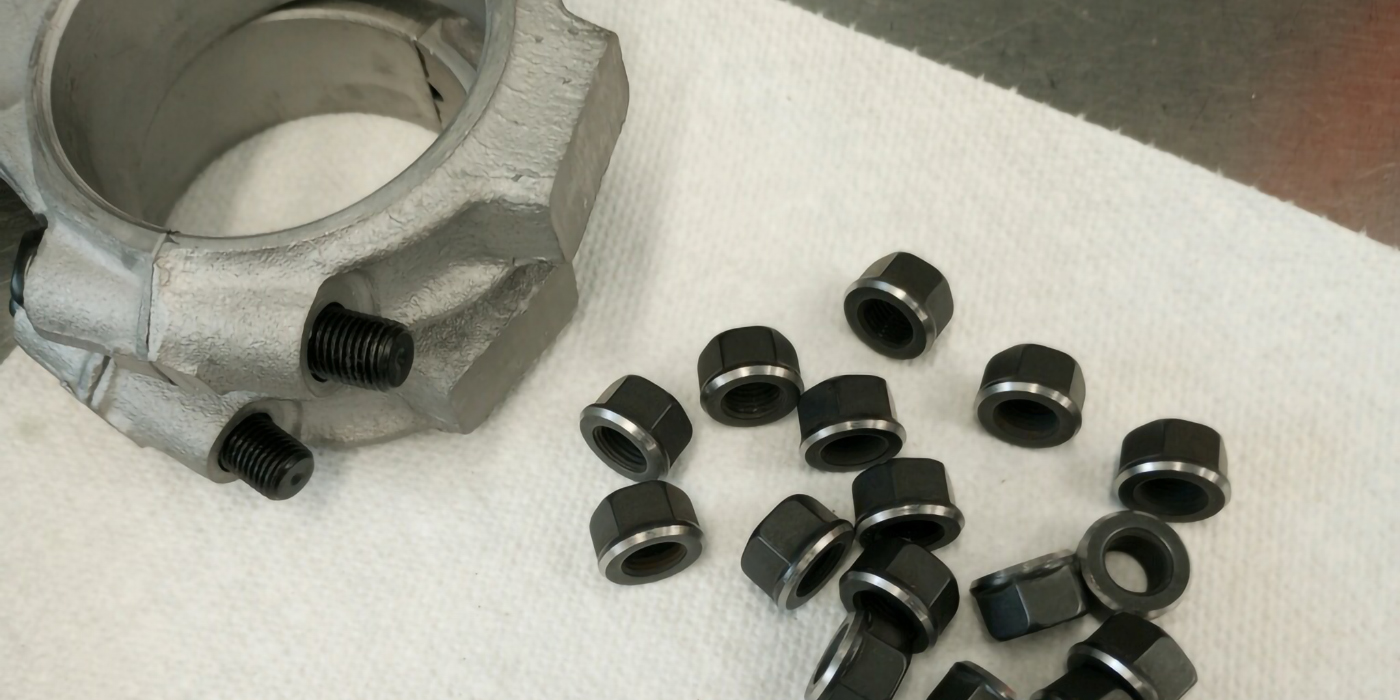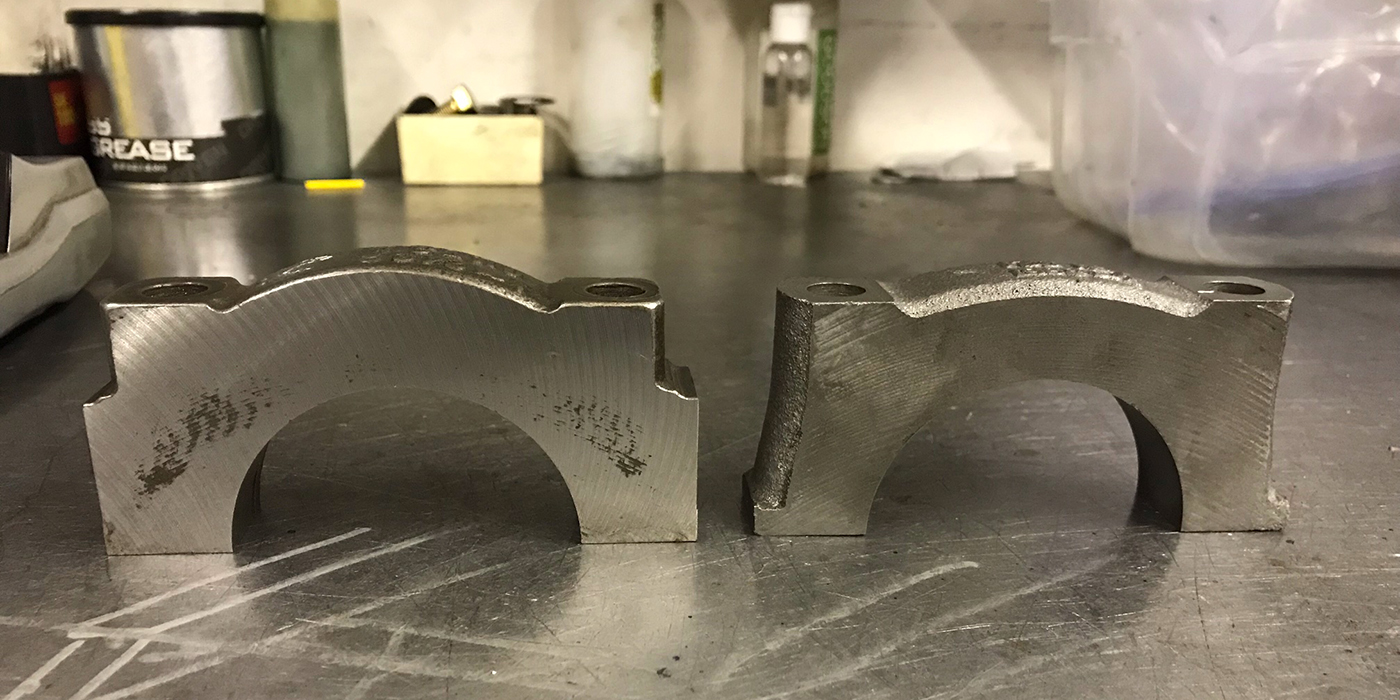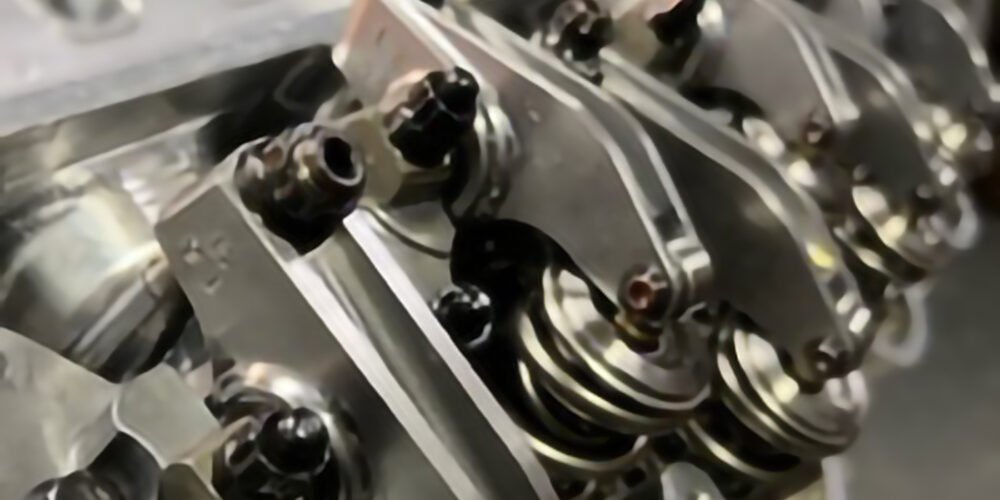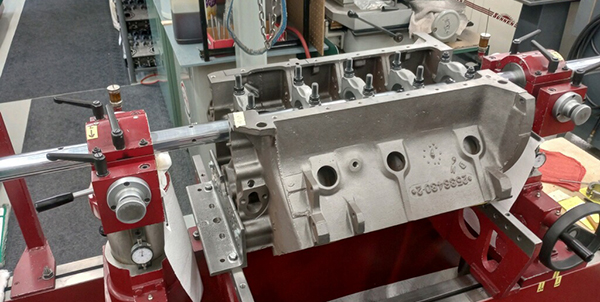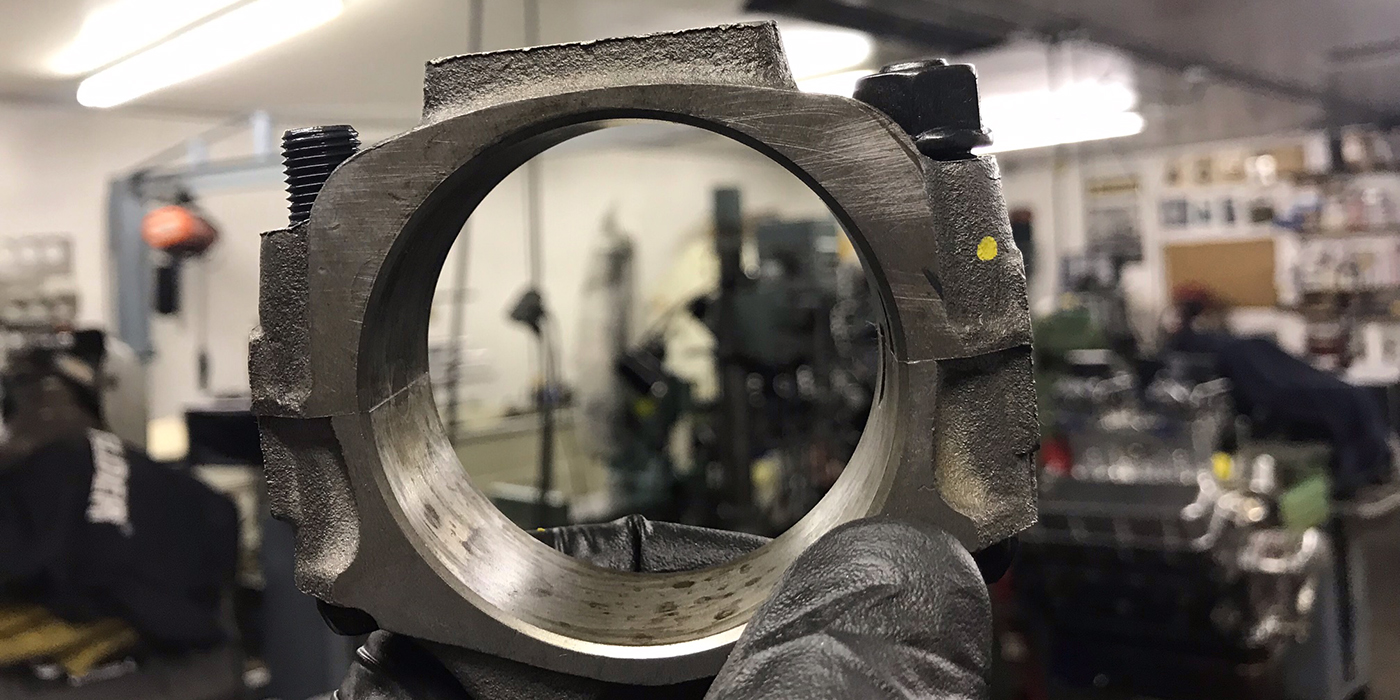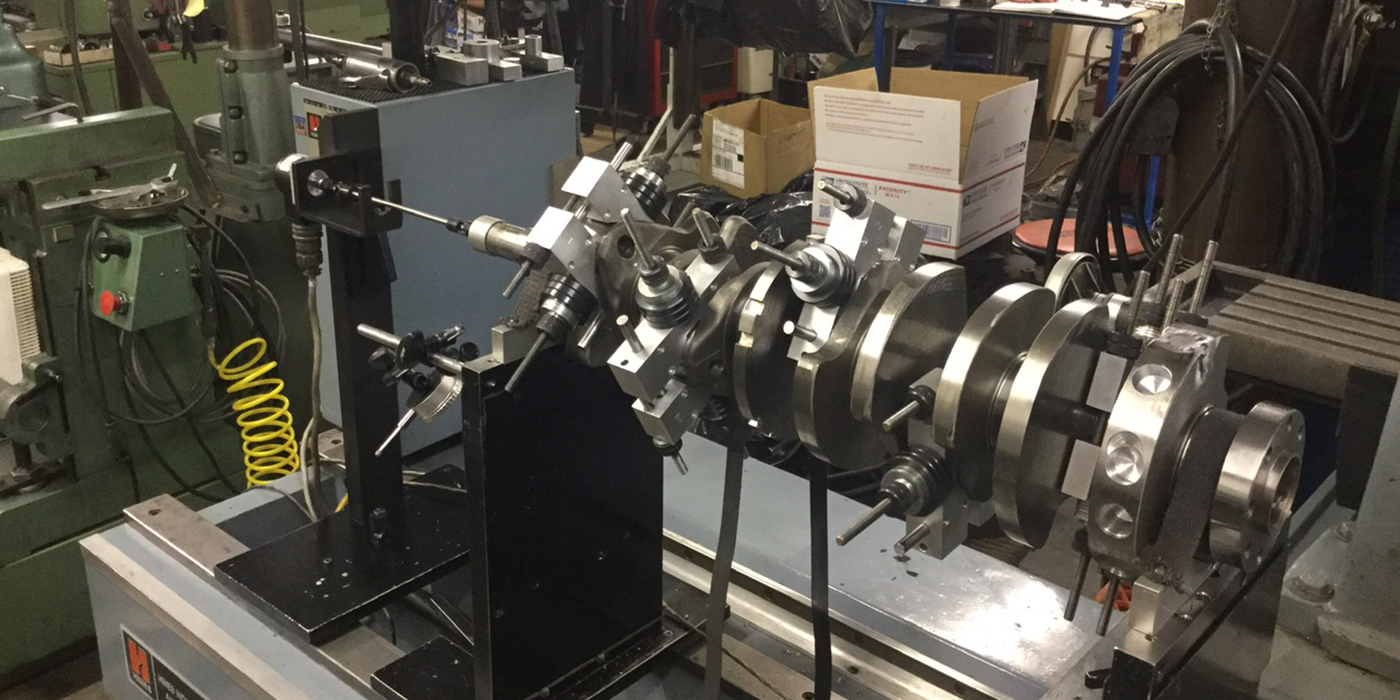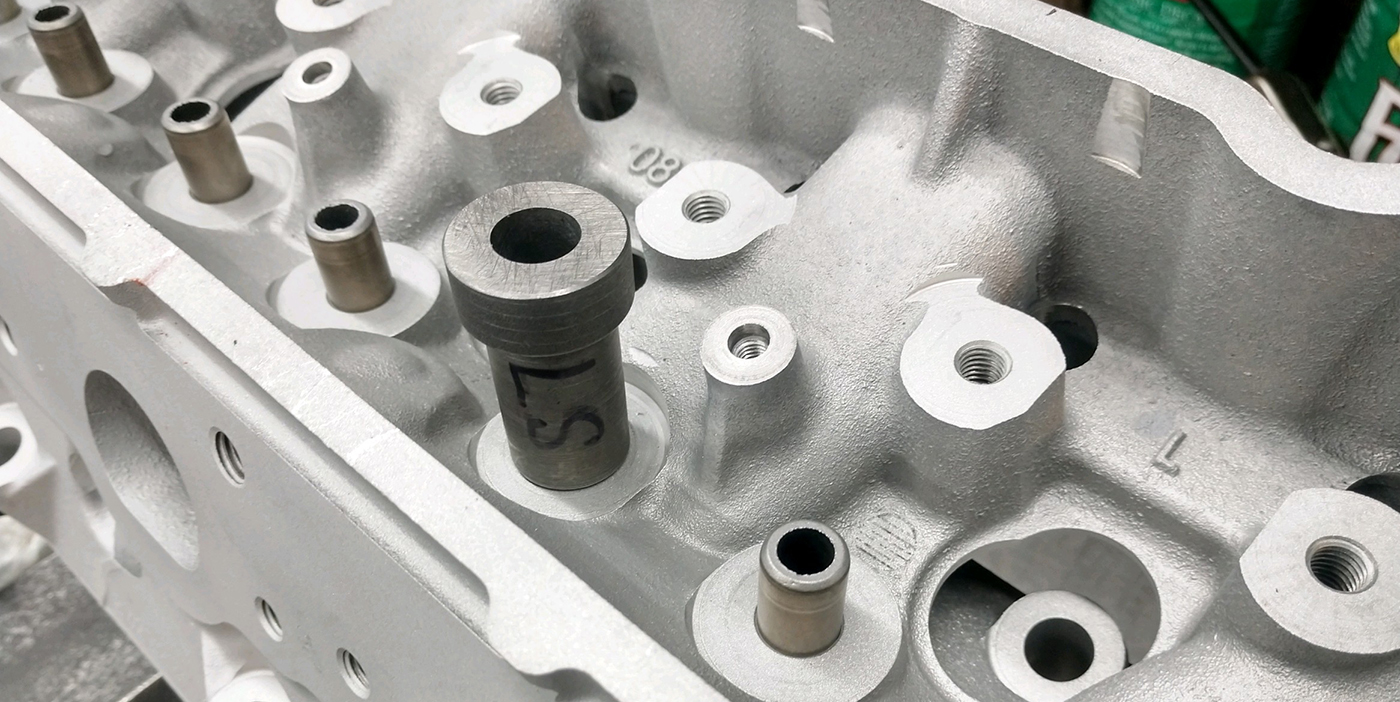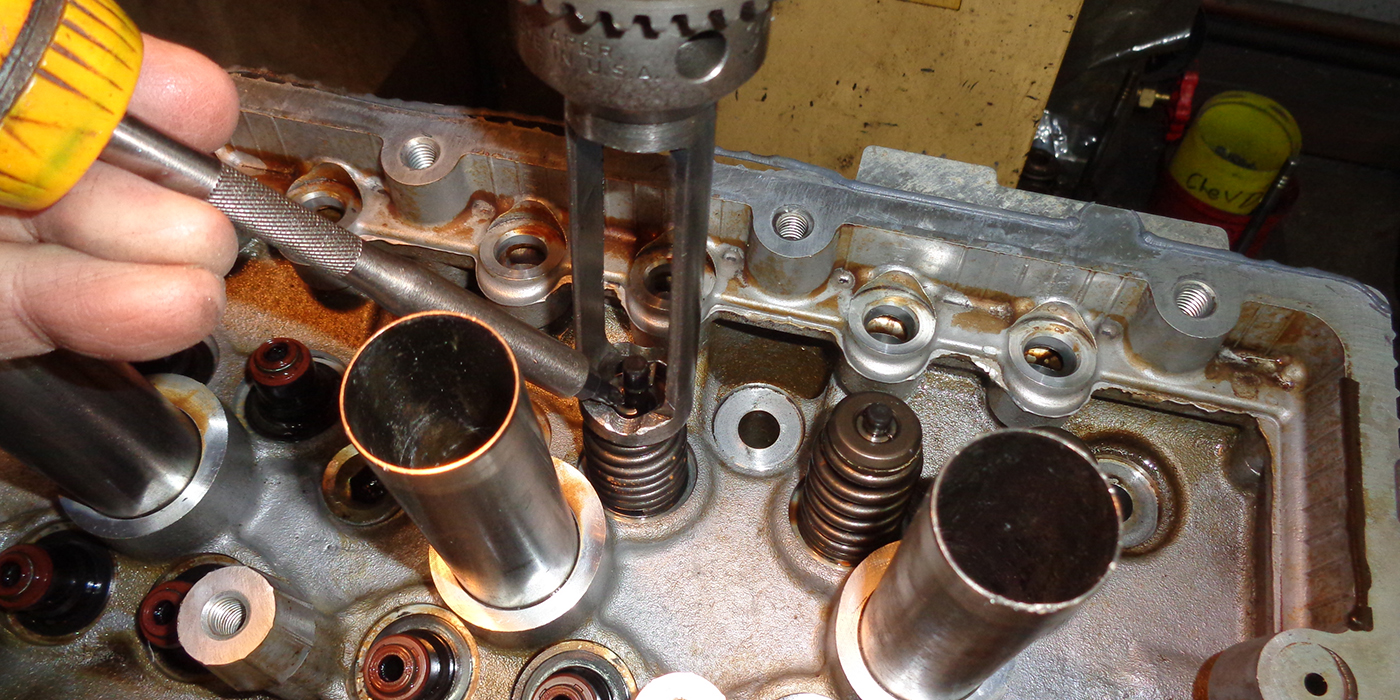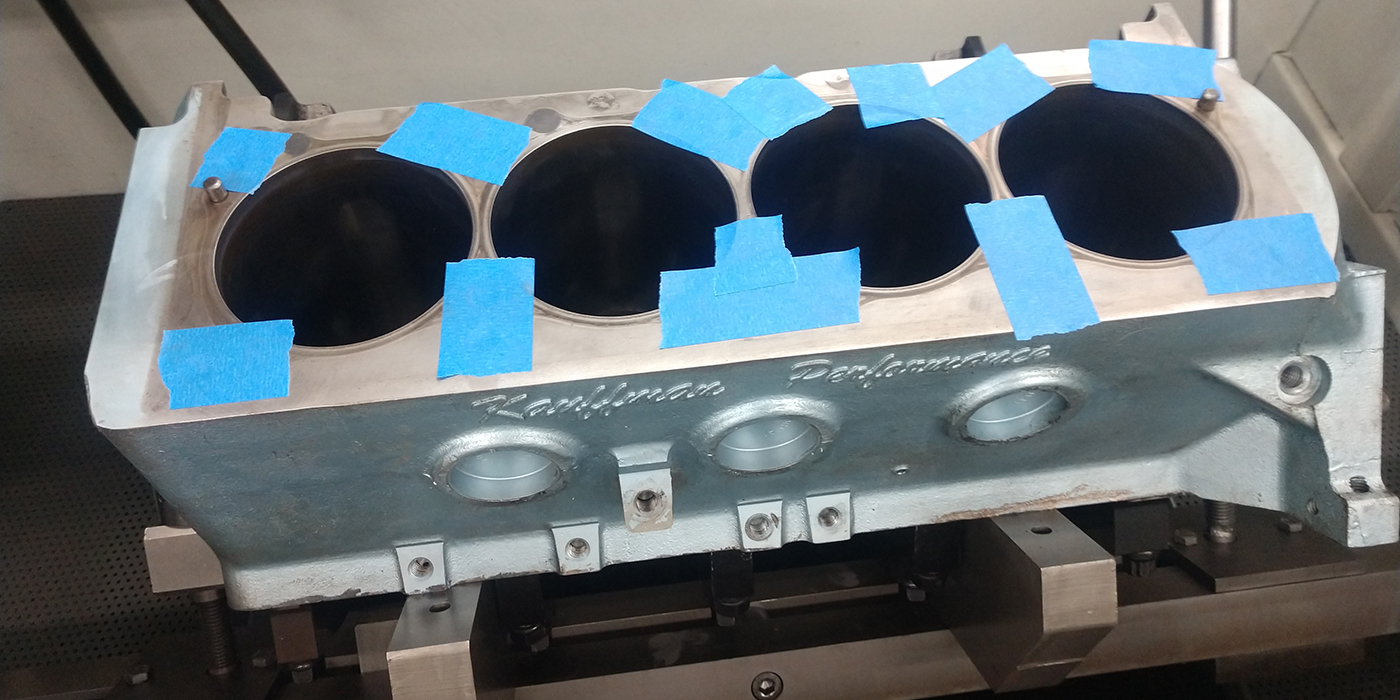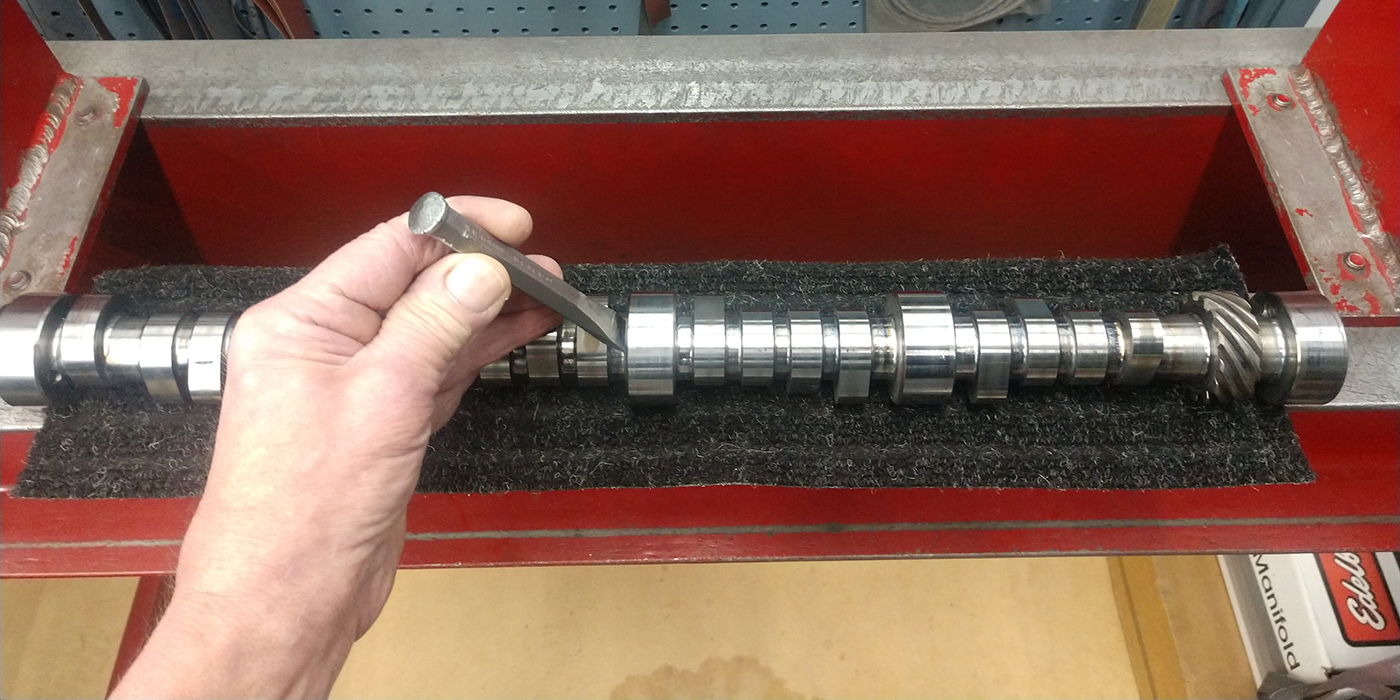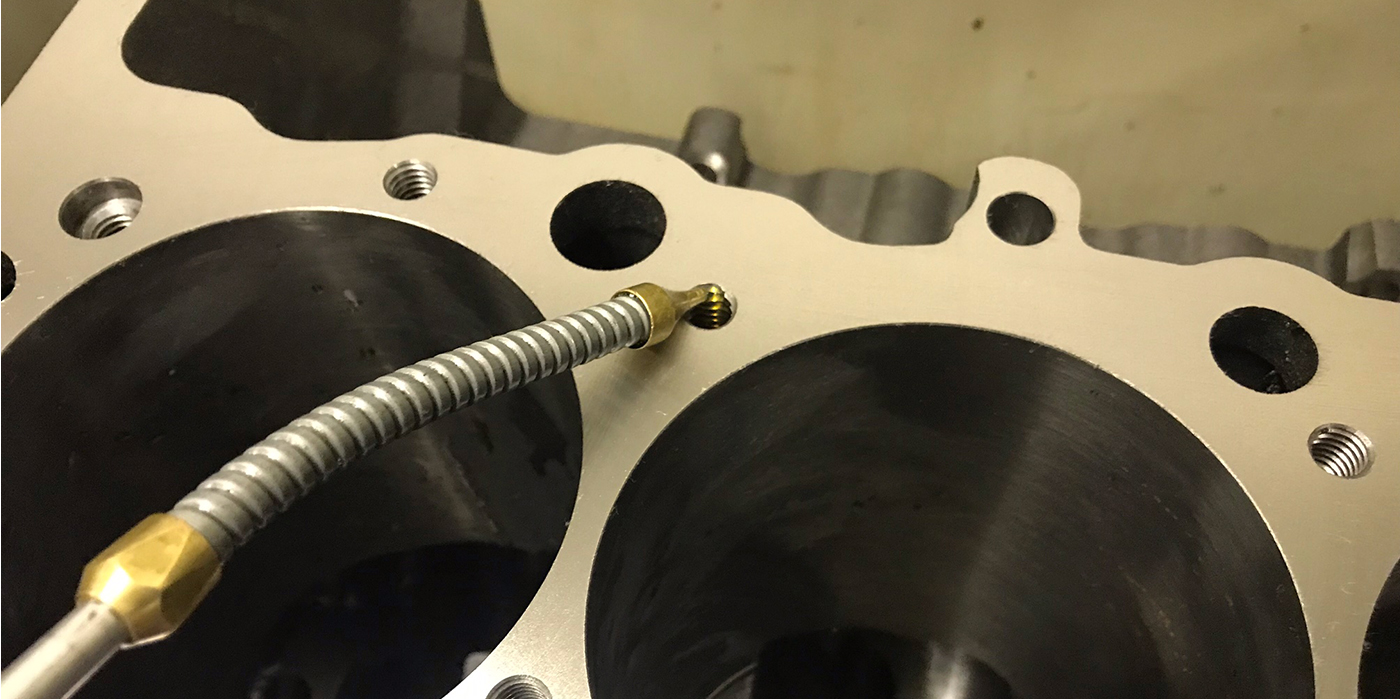SEEING BETTER IN THE MACHINE
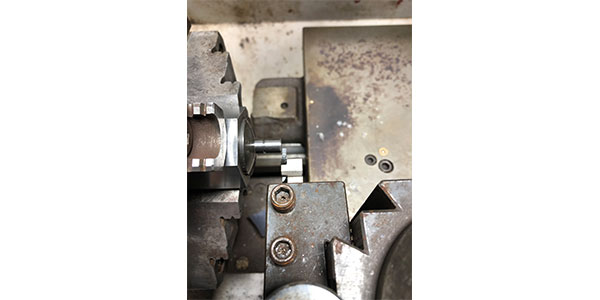
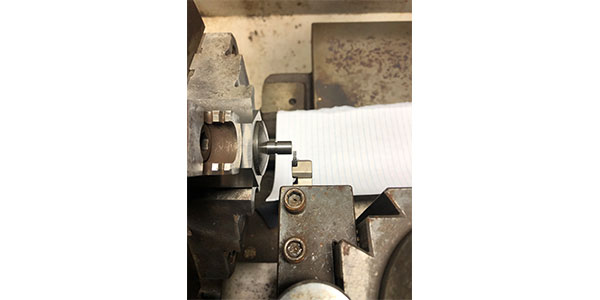
When machining, sometimes seeing where your tool is in relation to the part you are machining can be difficult at best. In the first photo it is difficult to tell exactly where the tool tip is. In the second photo, you can see that I laid a piece of white paper on the carriage. It’s like adding a super bright light and a magnifier at the same time! You can even leave it there while the machine is running because if it gets caught in anything it will not hurt you or the machine. The example shown is in a manual lathe, but this trick will work in any machine to help see the workpiece to tool relationship.
Tommy Daniels
Daniels Speed and Machine
Hernando, MS
VACUUM FOR CAST IRON DUST
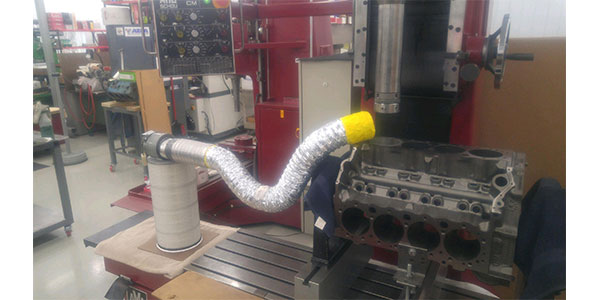
To help with cast iron dust when boring, I’ve made a couple different collectors. Vacuum cleaners work, but are so noisy you can’t hear the machine. This last one I built, with the large air filter, is by far the best one. Made from an old squirrel cage fan, some dryer duct, some scrap tubing and a little silicon sealer. It works great.
Randy Torvinen
Torvinen’s Machine Shop
Menahga MN
PNEUMATIC C-CLAMP
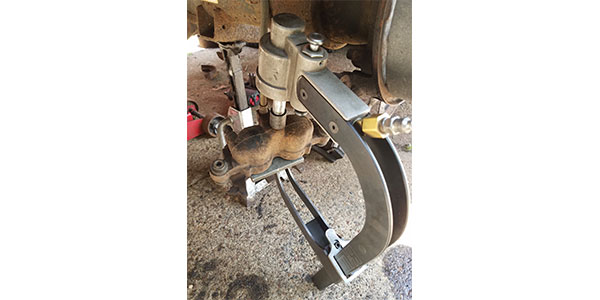
This one is admittedly not totally engine related, but can definitely apply. Sometimes thinking outside the box and repurposing a tool can be a great time and frustration saver. I came up with this one while doing brakes on the shop truck. After putting a steel plate and a C clamp on one caliper to keep the pistons from blowing out, I used my pneumatic spring compressor to collapse the caliper pistons on the other side, then switched the setup. It took 5 minutes to do both sides and I didn’t have to mess around screwing C clamps in by hand. We’re not getting any younger, so it’s better to work smarter, not harder.
Jake Sampson
Sampson Racing Engines
Inver Grove Heights, MN
HEAD INSTALLATION STUDS
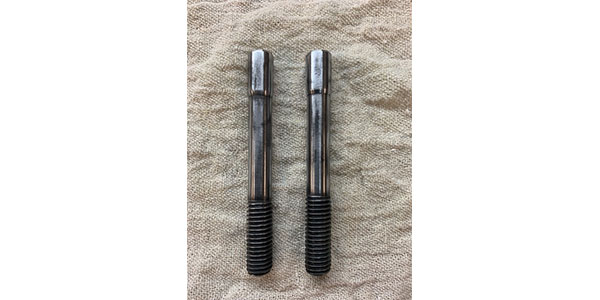
Here’s an easy way to put the head gasket and cylinder head on a engine. Simply cut off the heads of two head bolts to make some guide studs. Now screw them into the block and set the head gasket on. Then install the head and install some head bolts to keep it in place. Now remove your guide studs. If you slot the end of the stud, you could use a large screw driver to back them out. You can use the same studs for putting heads on in the car. We use them when putting cylinder heads on a complete build to make it simple and there is no way for the head to miss the dowels or damaging the head gasket if it slips off for some reason. Make sure your bolts are long enough so that with the head they still protrude out from the cylinder head enough to grab them for removal.
Gary Keeling
Keeling’s Automotive Machine
Santa Clara, CA
CAM TUNNEL CHECK
This is a quick and accurate way to check cam tunnel to crank centerline accuracy using the common Block Tru fixture. First, mount up the Block Tru fixture, be sure the front cone is flush with the plate and snug both front and rear. Next, remove the front plate and measure the outside dimension of the 1˝ cam tunnel spud to the 2˝ main bar, then deduct the radius for both (1.5˝). That’s the C/C distance. Repeat for the opposite side. Installing a front and rear cam bearing is more accurate if the block has uneven chamfers.
To check sway on the cam tunnel with the Block Tru, you have to square the block decks from one end. Next, remove the plate and cam tunnel cone mandrel, then install it on the opposite end of the block, facing the same way as on the previous side. (Note: It’s important that your index plate is very accurate. This can be checked by flipping it 180° after truing the decks and checking their alignment again.)
Now, sweep the deck to the index plate with the deck mic. If there is front to back sway in the cam tunnel, you’ll see that the decks are no longer parallel to the fixture as they were in the front. This will give you the direction you need to move the cam tunnel over. You can mock it up by shimming the cone to one side to find the exact amount you need to shift the cam tunnel.
Ideally, you would correct the cam tunnel before indexing the decks and lifter bores, but if you don’t have the blueprint fixture, this will get you there. Deck the distributor gear end first and correct the cam position from there so you don’t affect gear mesh, unless you know you can or need to reduce some lash.
I’ve done this on odd blocks that I don’t have the dedicated cam tunnel alignment tooling adapters for and it works great. You can make dedicated spuds for checking, but the cone allows you to mock up and shim for corrections.
Ron Flood
Cedar Machine
North Branch, MN

